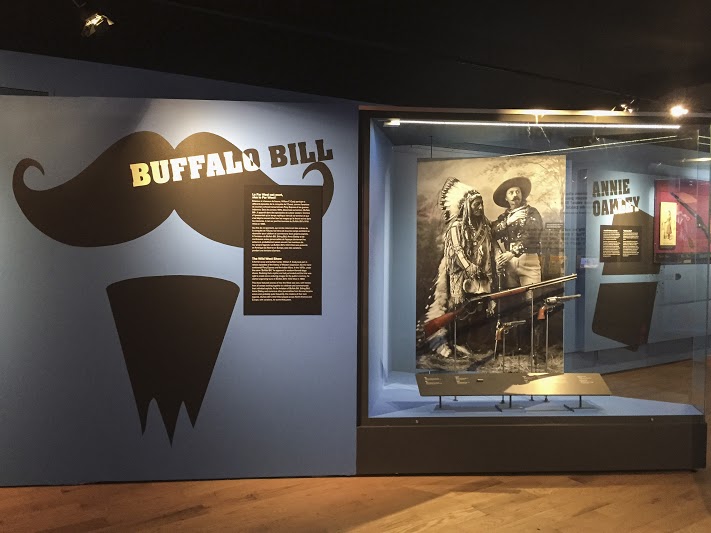Exhibit provides a not-too-serious look at some very serious people
From the get-go, the playful atmosphere is set. Before the tour even begins, you are given the one and only pamphlet of the showcase, a two-page flyer that solely contains quizzes and riddles, making it difficult not to have fun.
It’s not that a museum exhibit can’t be fun, but the jovial atmosphere at the Stewart Museum is a pleasant surprise considering the topic is weapons. D’Artagnan, Al Capone and the Others – Weapons and Legends is a collection of weapons and replicas that belong to famous characters, real and fictional, from history, literature and film.
The exhibit demands a playful attitude at every turn. Stepping into the narrow hall, the visitors’ ears are treated with the iconic James Bond theme, ditties from the wild west, and what seems to be the soundtrack from a Scorsese gangster film that causes both mild anxiety and a spring in the step.
The lively mood is further amplified by the abundant amount of colourful illustrations. Often, people and characters are photographed or sketched and blown up onto large-scale posters. This ambiance is imposing enough to downplay the seriousness of the dozens of displays of deadly weapons, yet not childish enough to detract from its focus.
The weapons are, of course, the main attraction here. And yet, they’re kind of not. Each historical or fictional figure is allotted a glass display case that houses their characteristic weapons. But very near these weapons is media from popular culture you can watch, hear and touch.
The tactile quality of the exhibit, coupled with the vibrant colours and exaggerated illustrations, including speech bubbles and panels, feels like an explosion at a comic book factory. In fact, next to the Lucky Luke display, a couple of editions of the publication are sitting out for visitors to look at.
While you can flip through pages or put headphones on to hear audio clips, you cannot, in fact, handle rifles and swords. However, should the mood for play strike, the exhibit houses an epic, gigantic Battleship game board complete with miniature ships and the promise of glorious victory against any foes.
This is where this exhibition excels. It is indeed an educational journey through the universe of weapons; you will come out savvy in regard to the rifles of Che Guevara, the pistol preferences of Butch Cassidy and the sword and shield metals of William Tell. Yet despite such an intimidating arsenal, this exhibition of deadly weapons doesn’t take itself too seriously.
A few feet away from Al Capone and his menacing face are Jack Sparrow’s knife and dagger collection accompanied by a monitor through which we get to watch Johnny Depp’s swashbuckling in the Pirates of the Caribbean film franchise. Next to a display dedicated to Annie Oakley are the rapiers Zorro would have used to defeat his enemies.
This joviality is carried through the two-storey display of famous cowboys, spies, pirates, knights, gangsters and revolutionaries. It is quite an achievement to turn national insurgents and dangerous criminals into a light-hearted affair.
The exhibition is part of a celebration to commemorate the museum’s 60th anniversary this year, but from the looks of it, the museum doesn’t feel a day over 10.
D’Artagnan, Al Capone and the Others – Weapons and Legends runs at the Stewart Museum until Nov. 1.
